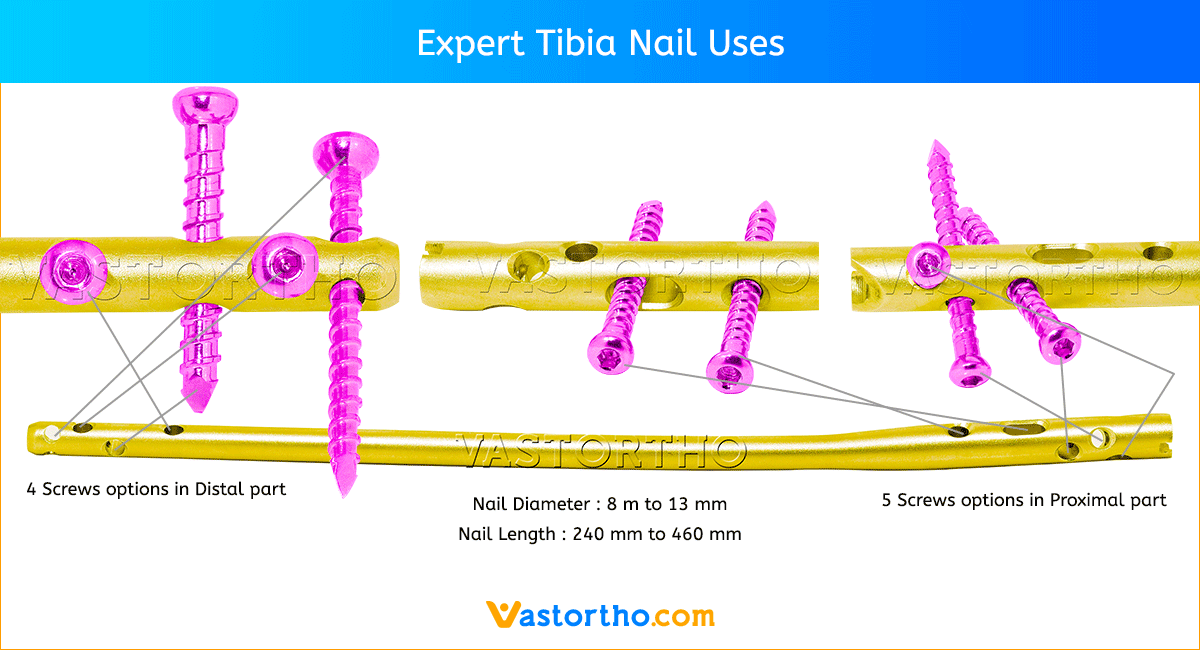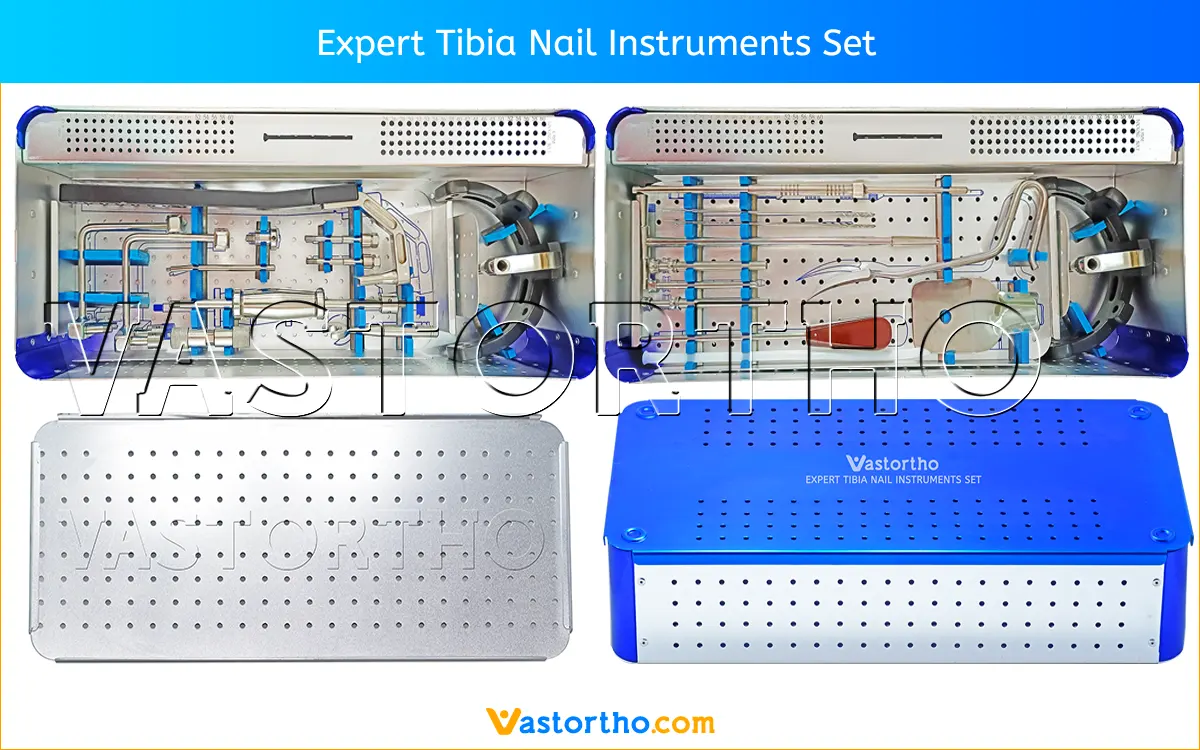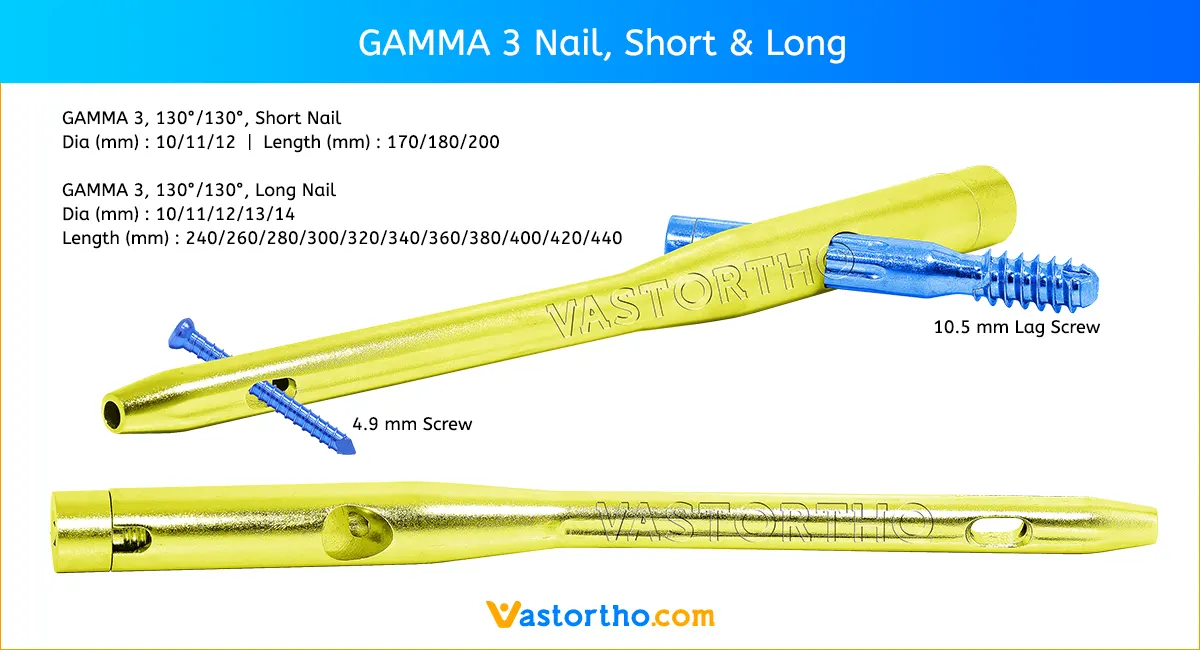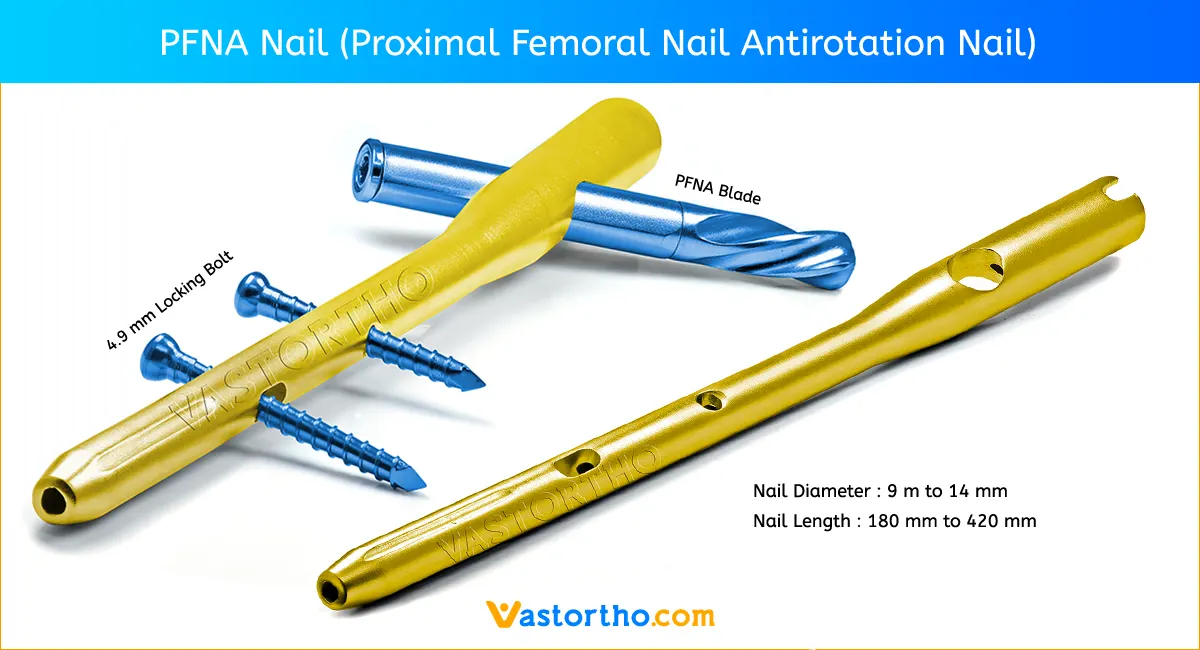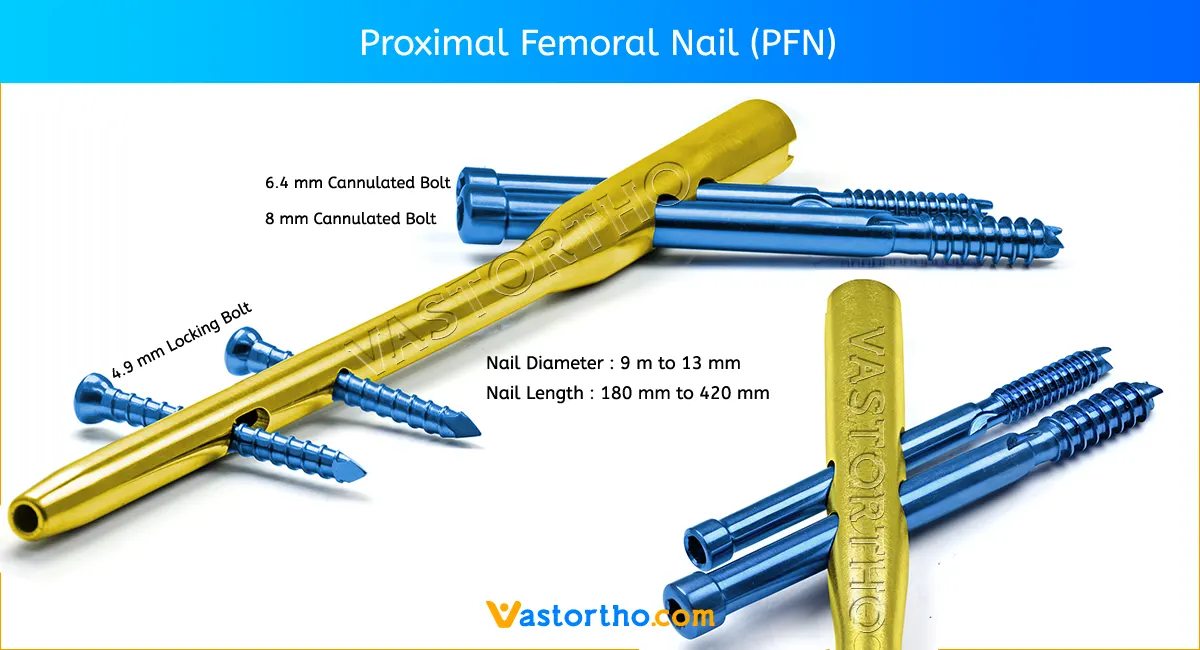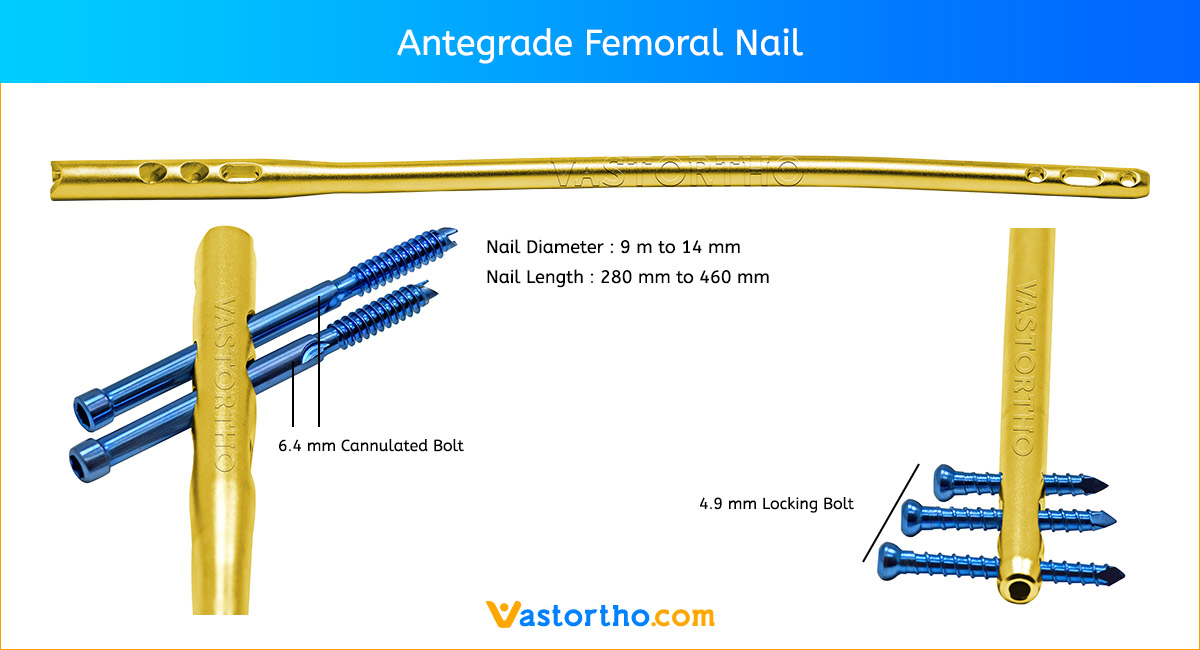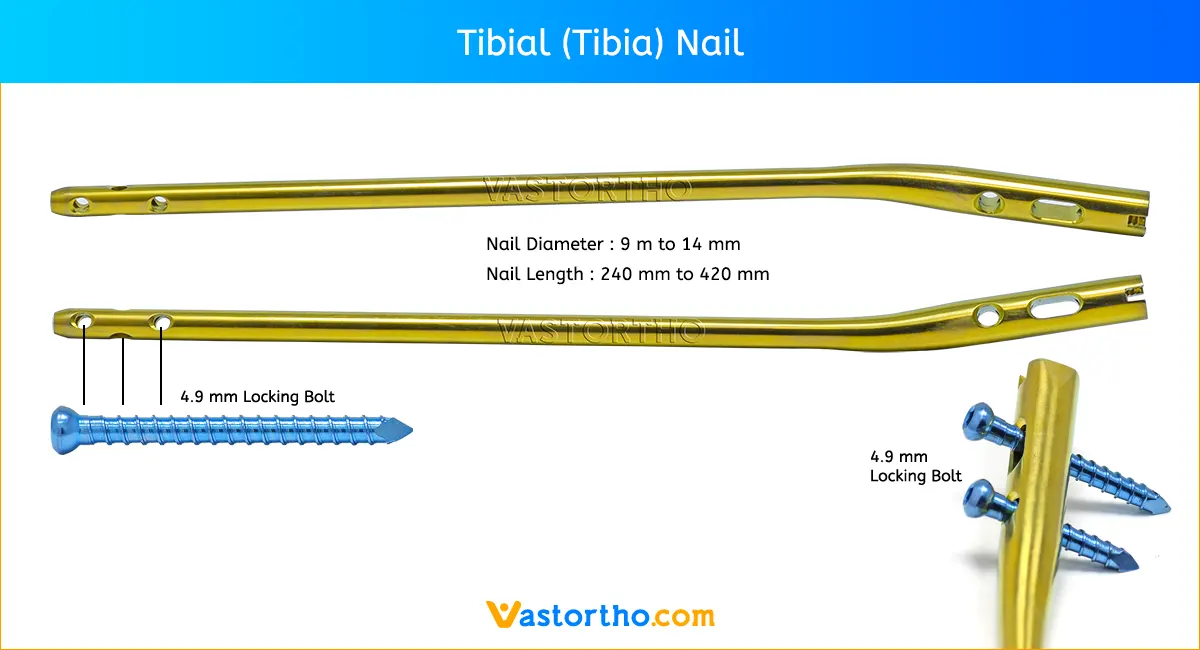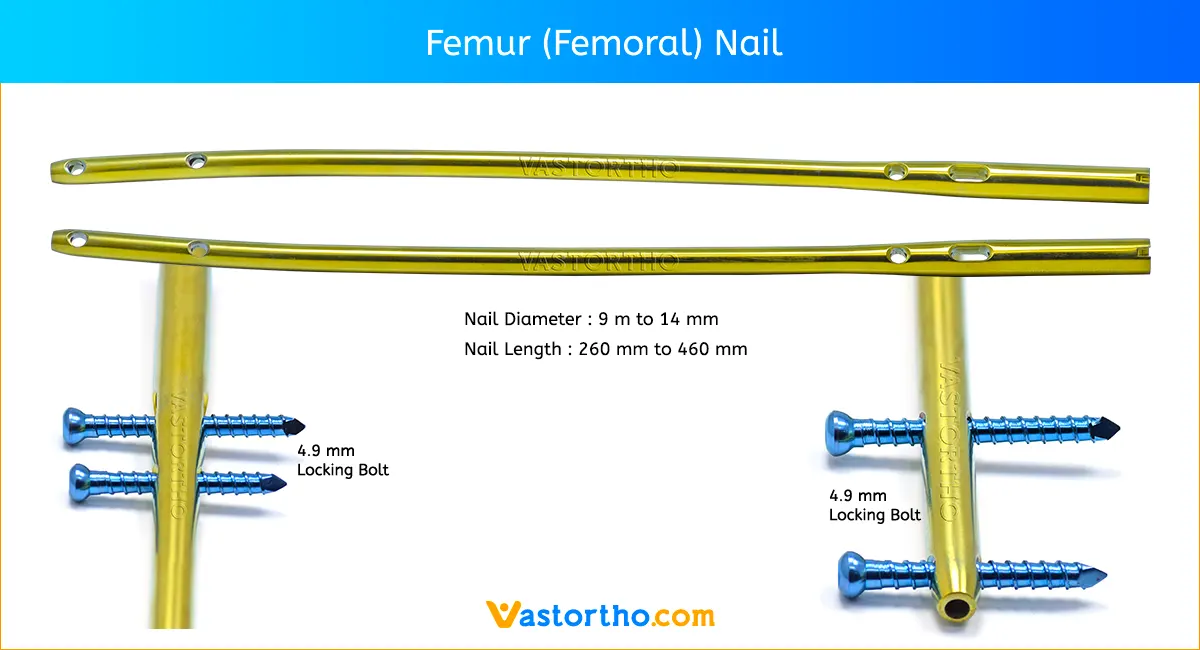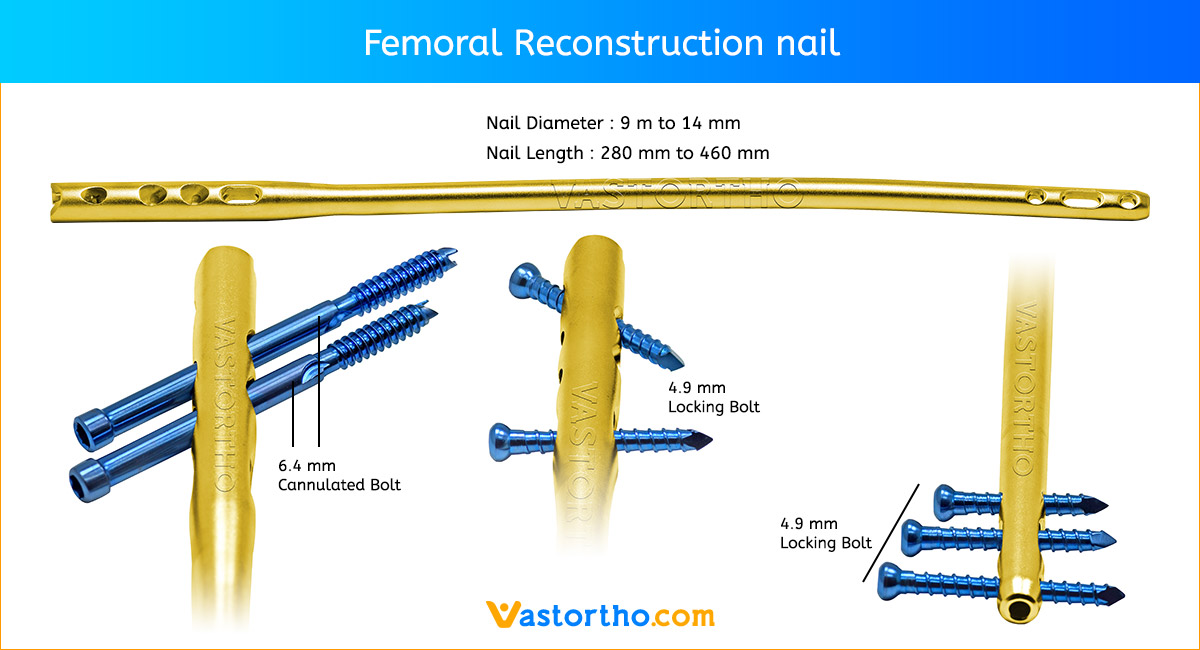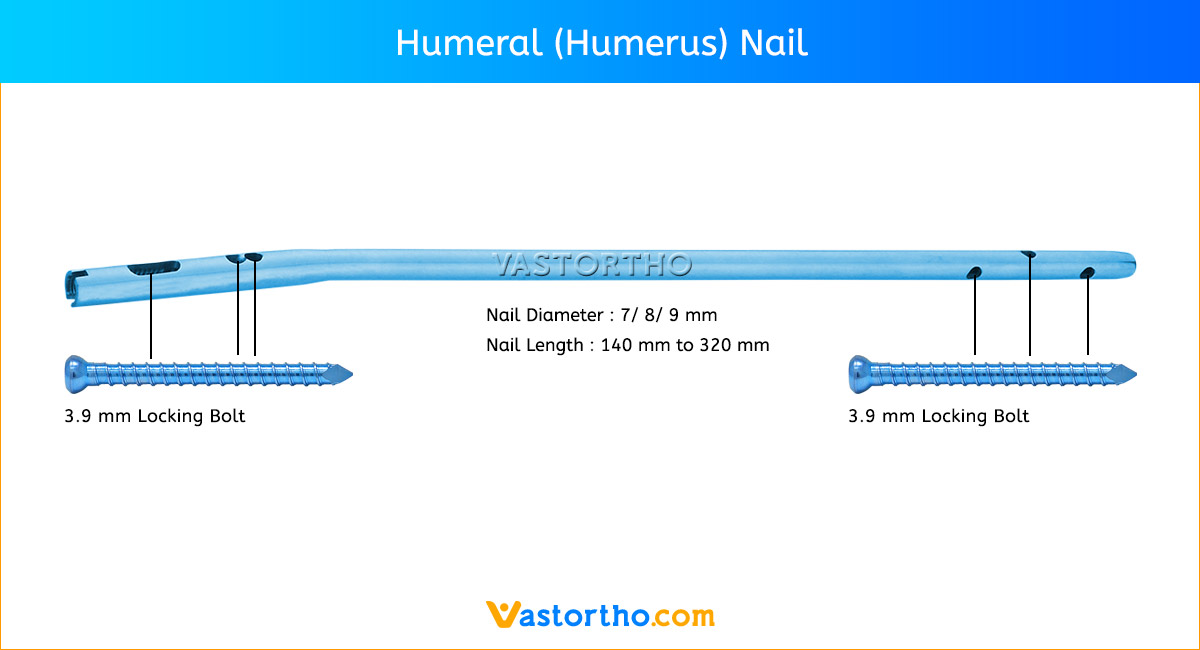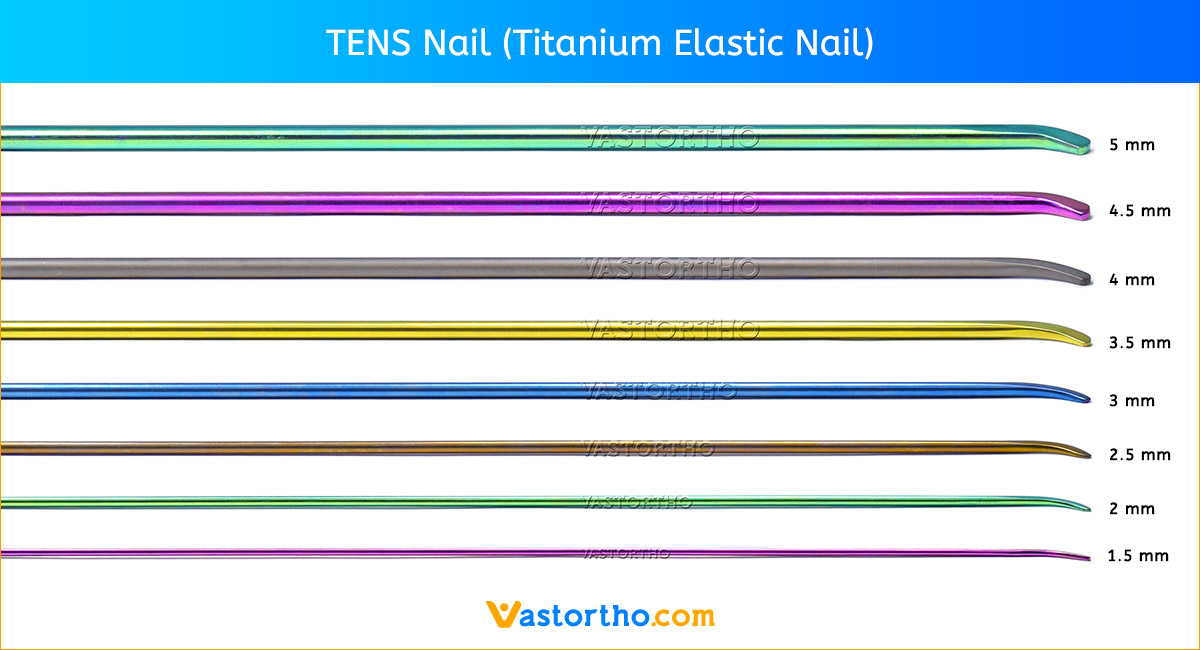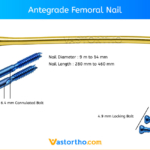Expert Tibia Nail Specification, uses, Sizes and Surgical Techniques
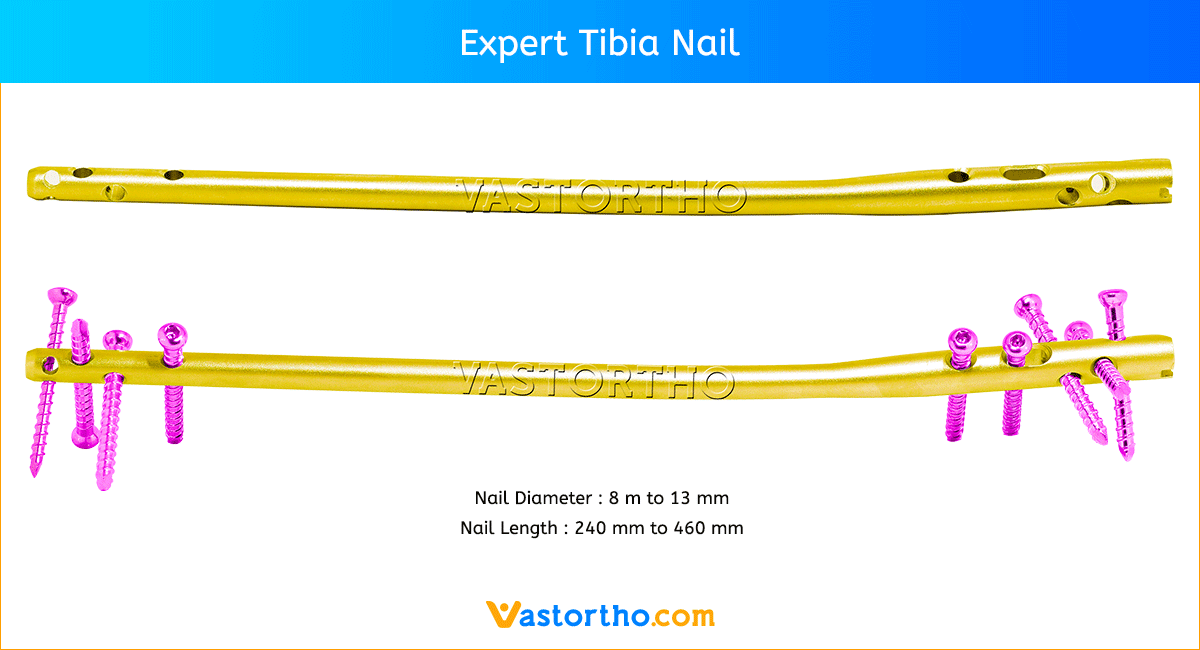
Expert Tibia Nail Specification
Versatile proximal locking options in Expert Tibia Nail
- Versatile proximal locking options. Three unique and innovative locking options, in combination with cancellous bone locking screws, increase the stability of the proximal fragment for proximal third fractures.
- Two state of the art medio-lateral (ML) locking options enable primary compression or secondary controlled dynamization.
End caps
- Securely lock the most proximal oblique locking screw to create a fixed-angle construct
- End cap prevents ingrowth of tissue and facilitates nail extraction
- Self-retaining Screw Driver recess for effortless end cap pick-up and ease of insertion
- 0mm end cap sits flush with nail
- 5mm, 10mm and 15mm end caps extend nail height if nail is over inserted Cannulated
Advanced nail design
- New anatomic bend for ease of insertion
- Titanium alloy for improved mechanical and fatigue properties
- Cannulated nails (from Ø 8mm to Ø 13mm) for reamed or unreamed techniques, enabling nail insertion over guide wire
- 2.5mm or 3mm ball tipped guide wires may be removed through the nail and insertion handle assembly (no exchange tube required).
- Solid nails (from Ø 8mm to Ø10 mm) for unreamed technique
Advanced distal locking options in Expert Tibia Nail
- Distal oblique locking option to prevent soft tissue damage and increase stability of the distal fragment
- Two ML and one antero-posterior (AP) locking options for stability of the distal fragment
All locking screws
- Double lead thread for more contact points for enhanced stability and ease of insertion
- Thread closer to screw head providing better bone purchase in the near cortex and improved stability
- Titanium alloy for improved mechanical and fatigue properties
- Self-tapping blunt tip
- Self-retaining Screw Driver recess allows improved torque transmission and increased resistance to stripping relative to a hex recess and secure locking screw pick-up.
Cancellous bone locking screws
- Indicated for the three unique proximal locking options of all tibia nails diameters
- Dual core design for optimized purchase in cancellous bone
- Unicortical

